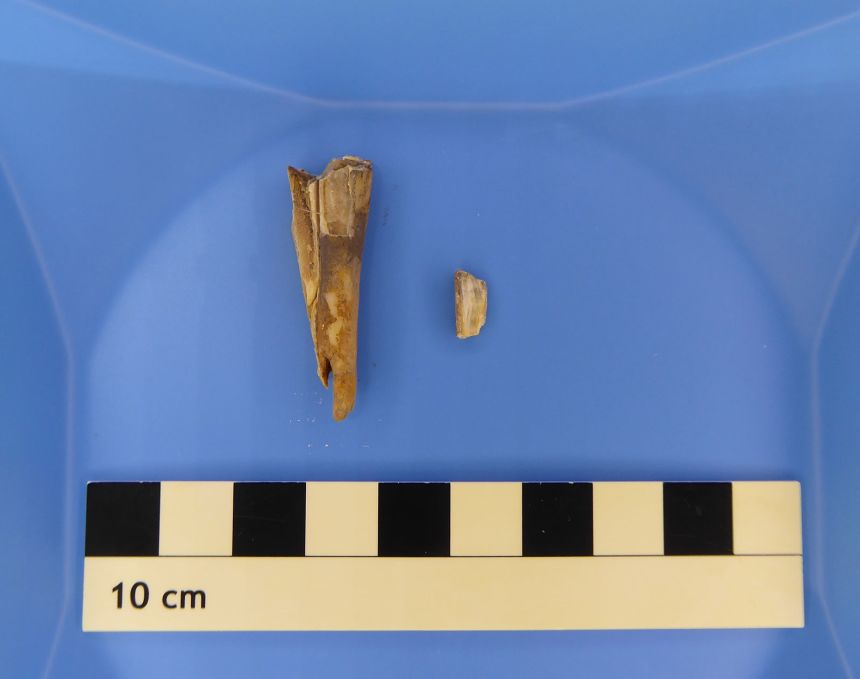Tweet
Email
Link
For thousands of years, a disease repeatedly struck ancient Eurasia, quickly spreading far and wide. The bite of infected fleas that lived on rats passed on the plague in its most infamous form — the Black Death of the 14th century — to humans, and remains its most common form of transmission today.
During the Bronze Age, however, the plague bacterium, Yersinia pestis, had not yet developed the genetic tool kit that would allow later strains to be spread by fleas. Scientists have been baffled as to how the illness could have persisted at that time.
Now, an international team of researchers has recovered the first ancient Yersinia pestis genome from a nonhuman host — a Bronze Age domesticated sheep that lived around 4,000 years ago in what is now modern-day Russia. The discovery has allowed the scientists to better understand the transmission and ecology of the disease in the ancient past, leading them to believe that livestock played a role in its spread throughout Eurasia. The findings were published Monday in the journal Cell.

“Yersinia pestis is a zoonotic disease (transmitted between humans and animals) that emerged during prehistory, but so far the way that we have studied it using ancient DNA has been completely from human remains, which left us with a lot of questions and few answers about how humans were getting infected,” said lead author Ian Light-Maka, a doctoral researcher at the Max Planck Institute for Infection Biology in Berlin. There have been nearly 200 Y. pestis genomes recovered from ancient humans, the researchers wrote.
Finding the ancient bacterium in an animal not only helps researchers understand how the bacterial lineage evolved, but it could also have implications for understanding modern diseases, Light-Maka added via email. “Evolution can sometimes be ‘lazy,’ finding the same type of solution independently for a similar problem — the genetic tools that worked for pestis to thrive for over 2000 years across over Eurasia might be reused again.”
The ancient bacterium that caused the Eurasia plague, known today as the Late Neolithic Bronze Age lineage, spread from Europe all the way to Mongolia, with evidence of the disease found across 6,000 kilometers (3,700 miles).
Recent evidence suggests that the majority of modern human diseases emerged within the last 10,000 years and coincided with the domestication of animals such as livestock and pets, according to a release from the German research institute. Scientists suspected that animals other than rodents were a part of the enormous puzzle of the Bronze Age plague transmission, but without any bacterial genomes recovered from animal hosts, it was not clear which ones.
To find the ancient plague genome, the study authors investigated Bronze Age animal remains from an archaeological site in Russia known as Arkaim. The settlement was once associated with a culture called Sintashta-Petrovka, known for its innovations in livestock. There, the researchers discovered the missing connection — the tooth of a 4,000-year-old sheep that was infected with the same plague bacteria found in humans from that area.
Finding infected livestock suggests that the domesticated sheep served as a bridge between the humans and infected wild animals, said Dr. Taylor Hermes, a study coauthor and an assistant professor of anthropology at the University of Arkansas.
“We’re sort of unveiling this in real time and trying to get a sense for how Bronze Age nomadic herders out in the Eurasian Steppe were setting the stage for disease transmission that potentially led to impacts elsewhere,” Hermes said, “not only in later in time, but also in a much more distant, distant landscape.”
During this time within the Eurasian Steppe, as many as 20% of the bodies in some cemeteries are those of people who were infected with, and most likely died from, the plague, making it an extremely pervasive disease, Hermes said. While livestock are seemingly a part of what made the disease so widespread, they are only one piece of the puzzle. The identification of the bacterial lineage in an animal opens new avenues for researching this disease’s evolution as well as the later lineage that caused the Black Death in Europe and the plague that’s still around today, he added.
“It’s not surprising, but it is VERY cool to see (the DNA) isolated from an ancient animal. It’s extremely difficult to find it in humans and even more so in animal remains, so this is really interesting and significant,” Hendrik Poinar, evolutionary geneticist and director of the Ancient DNA Centre at McMaster University in Hamilton, Ontario, wrote in an email. Poinar was not involved with the study.
It is likely that humans and animals were passing the strains back and forth, but it isn’t clear how they did so — or how sheep were infected in the first place. It is possible sheep picked up the bacteria through a food or water source and then transmitted the disease to humans via the animal’s contaminated meat, he added.
“I think it shows how extremely successful (if you want to label it that way) this particular pathogen has been,” Poinar added. He, as well as the study’s authors, said they hope that further research uncovers other animals infected with the ancient strain to further the understanding of the disease’s spread and evolution.
While the plague lineage that persisted during the Bronze Age is extinct, Yersinia pestis is still around in parts of Africa and Asia as well as the western United States, Brazil and Peru. But it’s rare to encounter the bacteria, with only 1,000 to 2,000 cases of plague annually worldwide.

There is no need for alarm when it comes to dealing with livestock and pets, Hermes said. The findings are a reminder that animals carry diseases that are transmittable to humans. Be cautious when cooking meat, or to take care when bitten by an animal, he added.
“The takeaway is that humans aren’t alone in disease, and this has been true for thousands of years. The ways we are drastically changing our environment and how wild and domesticated animals are connected to us have the potential to change how disease can come into our communities,” Light-Maka said. “And if you see a dead prairie dog, maybe don’t go and touch it.”
Taylor Nicioli is a freelance journalist based in New York.
Sign up for CNN’s Wonder Theory science newsletter. Explore the universe with news on fascinating discoveries, scientific advancements and more.
